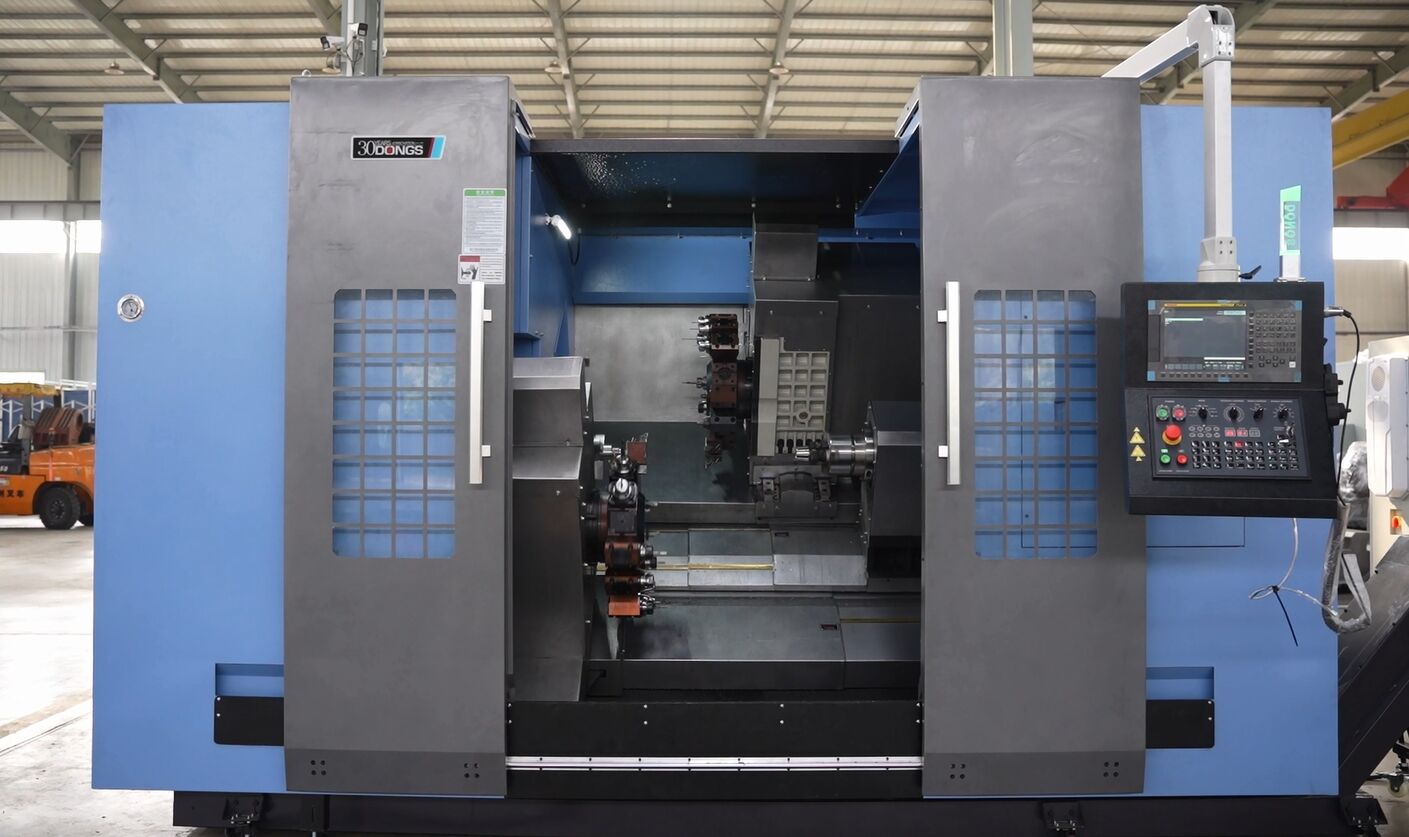Improving operational efficiency with a dual-spindle, dual-turret lathe
 In today's manufacturing industry, the relentless pursuit of productivity and cost-effectiveness makes advanced machine tools indispensable, among which the dual-spindle dual-turret lathe stands out as a powerful force for efficiency and versatility. By integrating two spindles and two turrets in one machine, manufacturers can perfectly achieve unprecedented high-efficiency output and high-precision levels. Let's explore in detail how this new technology can improve efficiency and simplify production processes.
In today's manufacturing industry, the relentless pursuit of productivity and cost-effectiveness makes advanced machine tools indispensable, among which the dual-spindle dual-turret lathe stands out as a powerful force for efficiency and versatility. By integrating two spindles and two turrets in one machine, manufacturers can perfectly achieve unprecedented high-efficiency output and high-precision levels. Let's explore in detail how this new technology can improve efficiency and simplify production processes.
The main advantages of dual-spindle dual-turret:
1. Simultaneous processing
The definition of dual-spindle dual-turret lathes is that they are able to perform machining operations simultaneously. When one spindle works on the main side of the part, the second spindle can simultaneously process on the secondary side. This simultaneous processing greatly shortens cycle time and improves productivity.
2. Reduced workpiece handling
Traditional lathes usually need to transfer workpieces between machines for multi-sided processing. The dual-spindle dual-turret lathe eliminates this need because it can complete the entire processing in one setup. This processing can minimize the risk of errors, provide accuracy, and save valuable labor time.
3. Improve tool utilization
Equipped with two turrets that can accommodate a variety of tools, the dual-spindle dual-turret lathe can perform complex machining operations without frequent tool changes. This feature can improve tool utilization and reduce downtime for tool changes, thereby improving overall efficiency.
4. Save space and cost
Typically, the operations of multiple machines are combined into one, and the dual-spindle dual-turret lathe can save a lot of valuable space. In addition, compared with purchasing and maintaining multiple separate machines, investing in a dual-spindle dual-turret lathe is more cost-effective in the long run.
5. Improved Workflow
Integrating the dual-spindle dual-turret lathe into the manufacturing production line can reduce the corresponding bottlenecks, thereby simplifying the workflow, and further reducing manual intervention and downtime by using automated integrated robotic loading and unloading systems. By reducing machine settings and conversions, manufacturers can maintain consistent productivity and meet deadlines more reliably.
Dual-spindle dual-turret lathes are widely used in industries such as automotive, aerospace, medical and electronics. They are capable of handling complex geometries and large-scale production, and are ideal for producing parts such as shafts, accessories, valves and connectors.
For example, in the automotive industry, these machines are used to produce precision engine parts with tight tolerances. In the medical industry, they can also be used to manufacture complex components for surgical instruments and implants.
Optimize tool paths: Use advanced CAM software to design efficient tool paths and minimize non-cutting time.
The dual-spindle dual-turret lathe represents a leap forward in machining technology. Providing manufacturers with efficient and competitive machines, by adopting this technology, companies can streamline operations, reduce costs and achieve higher quality output. As the industry develops, adopting advanced machinery such as dual-spindle dual-turret lathes will be key to staying ahead in the productivity race.

